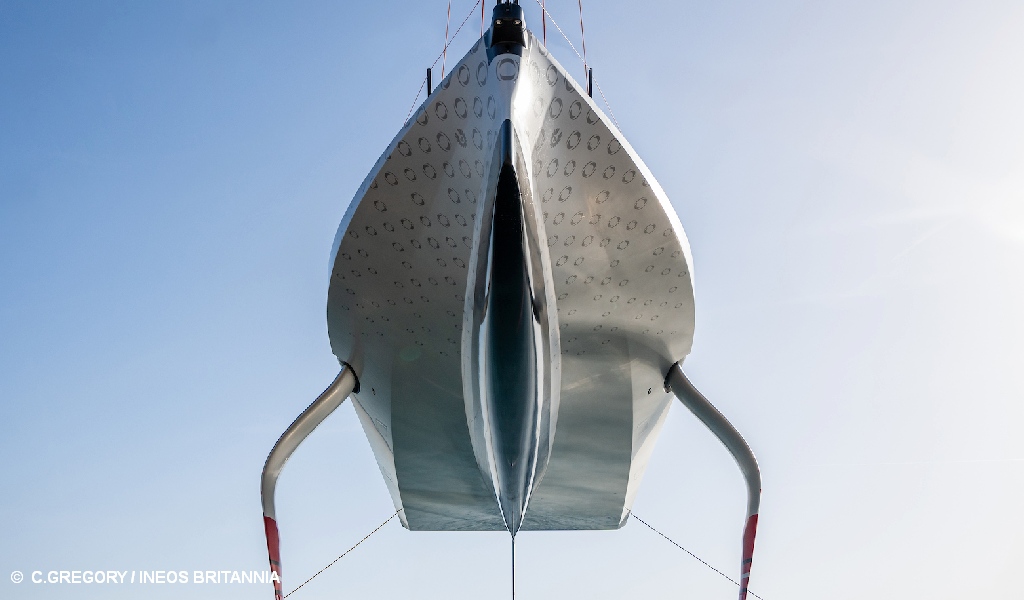A very restricted portfolio of images released by INEOS Britannia of the reveal of their new T6 (LEQ12 test boat) in Palma, Mallorca.
With a noticable lack of deck shots, avoiding revealing any cyclor fit-out . . . yet!
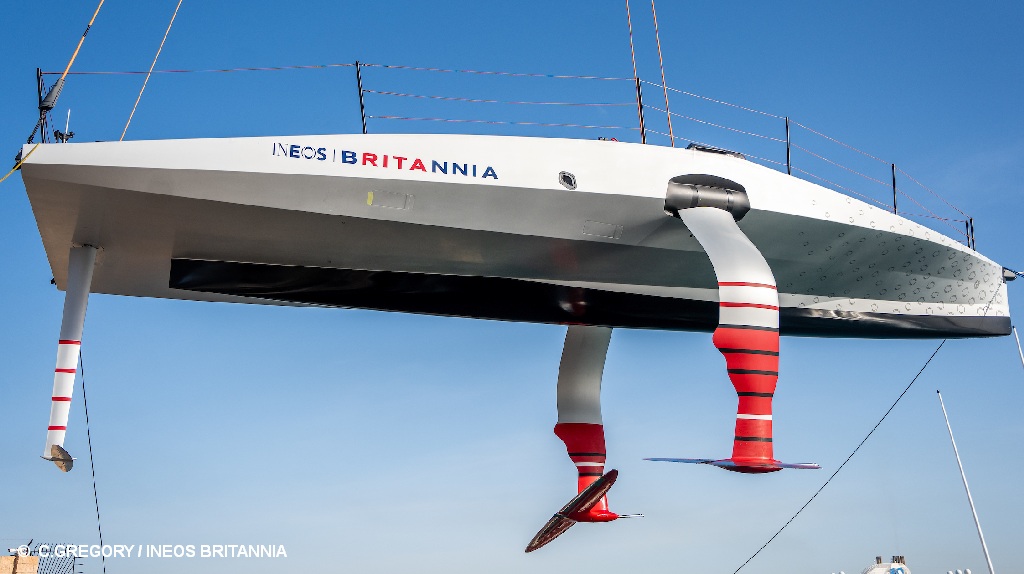
With the reveal of their LEQ12 test boat after its move to the team’s winter base, and with the sailing team roster now up to ten individuals, the programme will move to launch and boat testing.
There will be a long list of tow-tests to validate the information from the design tools. The intention is that this will be done in stable wind conditions to reduce any unknown aerodynamic influence on what they are measuring.
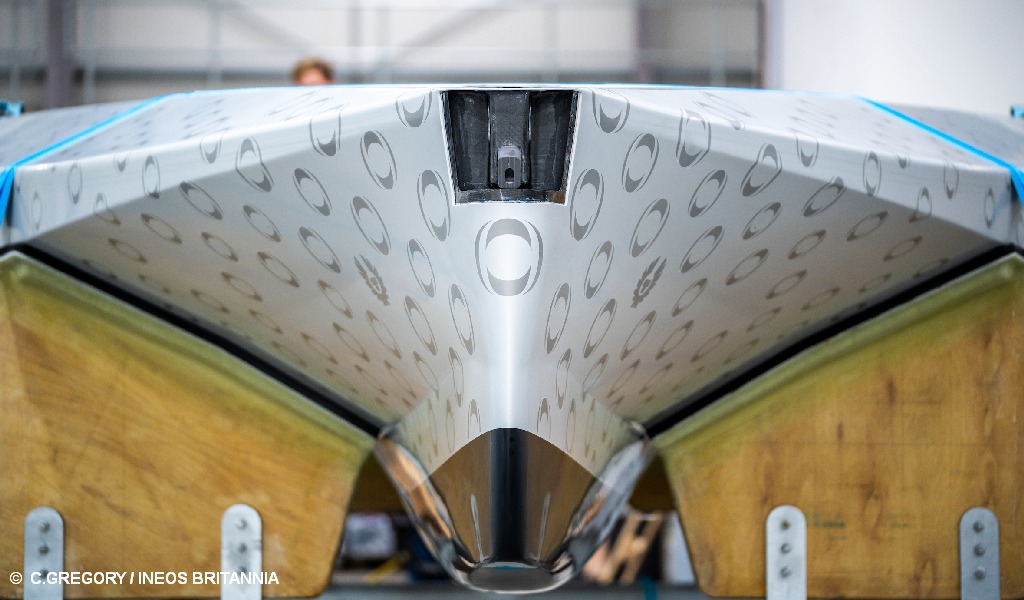
Geoff Willis, Chief Technical Director . . . “The test boat is there to improve and validate our tools as well as test the team itself.”
“These key moments are going to continue to happen every time a new piece of material goes on, systems are installed, and masts go up, the team will begin to see how the boat is starting to come together.”
The object is to take uncertainty out of the initial testing program with T6, so that they can be more accurate in the performance data that is collected, and in the validation of the design tools with that data.

This new emphasis on modelling and simulation means that the testing of ideas in the America’s Cup has changed dramatically since the days of the IACC class, when hulls, keels and rudders were tested in tanks, the sails in wind tunnels and both of those and everything else were also done full size with two boats.
All of these things are now banned, but the need to work out which ideas are going to provide a performance advantage has not gone away.
These days almost all of that work happens in the computer.
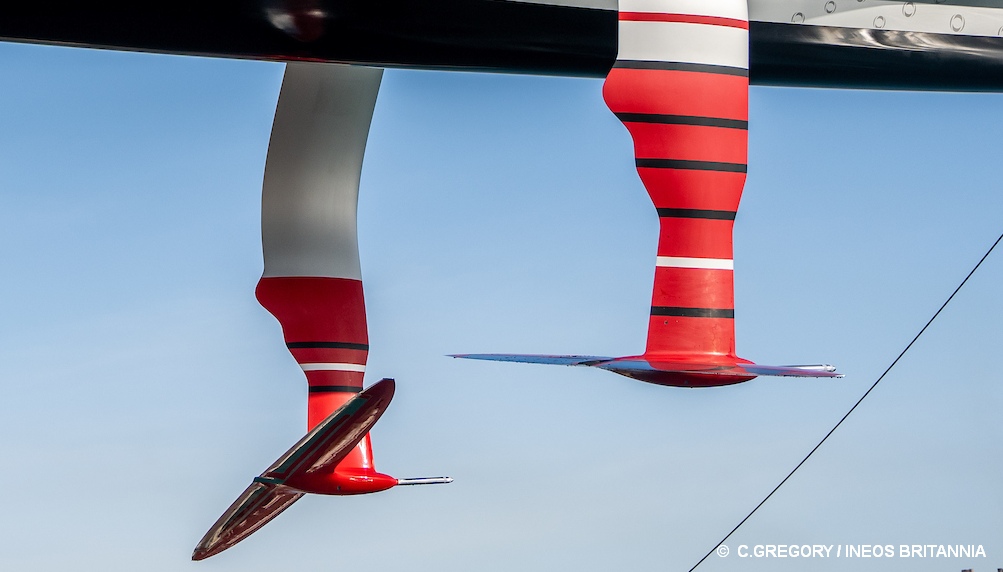
INEOS Britannia CEO and Skipper Ben Ainslie added . . . “That’s why the validation is going to be really key, which is something that ultimately has let us down in the last two campaigns.”
“And Barcelona is a different venue to previous recent America’s Cups. There’s more of a seaway, so understanding how that might impact the predictions of our tools is also key.”
“There are also strict restrictions on the number of components that we can test and it’s really important to build the right ones, so again, the ability to get really good predictions of performance from the modelling is key.”
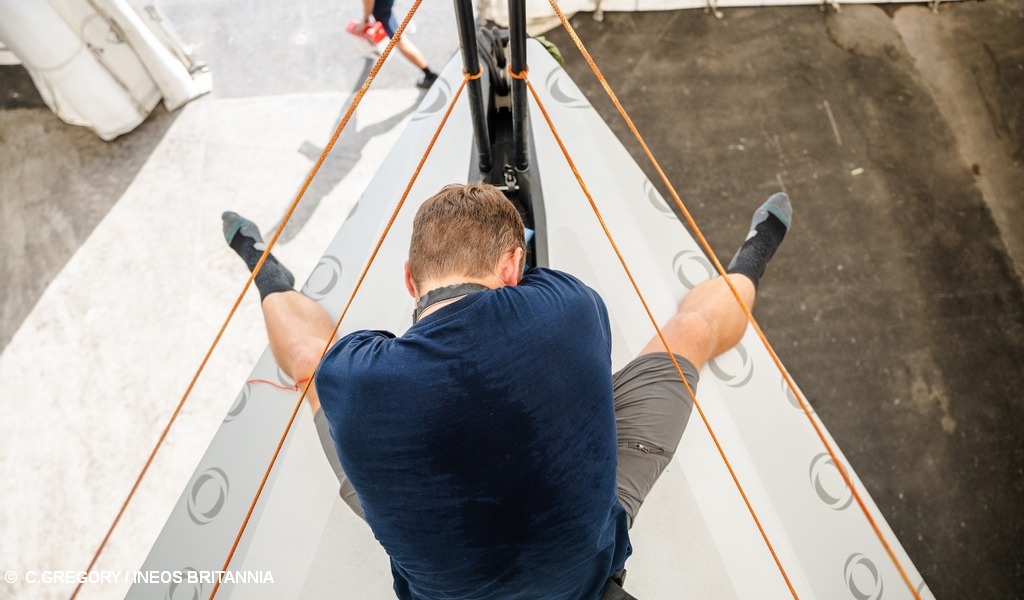
Other AC37 teams already on the water include . . .
Alinghi Red Bull Racing sailing its AC75 training yacht (ex ETNZ) at Barcelona, the 2024 Cup venue.
Emirates Team NZ sailing the first AC40 on Waitemata Harbour, in New Zealand.
American Magic testing with cyclors in Pensacola, USA.
Luna Rossa sailing their LEQ12, test yacht, which they recently launched.
Related Post:

